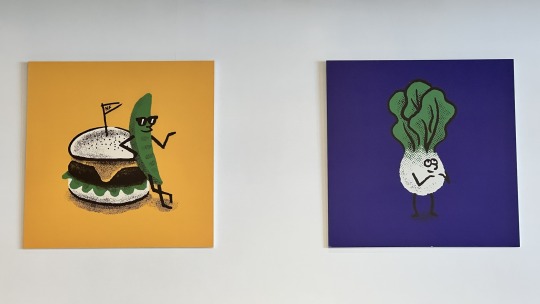#native foods
Text
Just a couple of great (Eastern) North American native seasonings, which sadly usually get completely ignored outside Native culinary traditions. You've got essentially a different species of Sichuan/sansho pepper, and "Appalachian allspice" which especially deserves more attention.
As discussed here, the young twigs and leaves are also good in teas. Usually to add a nice flavor in with other herbs. You could do worse than to try it with mint or rosehips. Also good to throw some into sumac "lemonade".
Also often combined with native bay leaves to season meats and stews!
(I am honestly not sure what species of bay leaves grow where I'm from, only what it looks like. Not finding much info right now, on the fly. The level of biodiversity can actually complicate things sometimes!)
Another useful Eastern North American plant, which can unfortunately be trickier to grow than any of the shrubby ones above if you don't have good access to the wild stuff:
As mentioned, that also combines great with the spicebush berries. Usually in sweet dishes, but I don't see why it wouldn't work well in savory recipes too. They're suggesting the combo in seasoning rubs. It would probably work well with sumac for that. Throw in some bay leaf and possibly some Sichuan pepper-alike, and you're set! 😁
31 notes
·
View notes
Text
Watch "Benefits of Lemon Myrtle" on YouTube
youtube
Here are some potential benefits of the beautiful plant of Lemon Myrtle, Backhousia Citriodora.
4 notes
·
View notes
Text
Native foods educator Valerie Segrest on marking Thanksgiving with respect
Nov. 18, 2022 at 6:00 am/ Updated Nov. 21, 2022 at 6:01 pm
Valerie Segrest doesn’t want anybody to give up Thanksgiving. As a Native foods educator and Muckleshoot tribal member, she considers giving thanks for food to be both beautiful and essential, while the act of gathering around the table with gratitude is something that she thinks should take place far more often. Preparatory to this year’s New American holiday, she generously shared her thoughts on the topic, including what non-Indigenous people can do to celebrate Thanksgiving with mindfulness and respect. Therecipes also shared herecan act as conversation starters for greater truth and understanding at any table, at the holidays or otherwise, while also prompting more gratefulness for deliciousness.
Those seeking knowledge about Indigenous foods and more recipes — and those seeking to give this gift to others — might first turn to “Indigenous Home Cooking: Menus Inspired by the Ancestors,” co-authored by Segrest and the Indigenous Food Lab, and home to two of the dishes here. The book also guides those seeking Native-produced ingredients (also an excellent gift to give) to the Intertribal Agricultural Council’sAmerican Indian Foods, among other resources. “Indigenous Home Cooking” isavailable on-site or online from Seattle’s Arundel Books. (This interview has been edited for length and clarity.)
On what Thanksgiving — and thanksgiving — means to her:It’s a contentious subject within Native communities, just because the story isn’t really fully accurate. Some people call it Thanks-taking, in fact. But I think what I’ve gleaned from it, personally, is the importance of sitting around a table and connecting to food, and connecting to people through food, which is the broader story. And that is probably something we all need to do more of. In our standard American cultural patterns, we’re sort of eating from one thing to the next, and oftentimes isolated, and oftentimes on the go, and so slowing down and eating a meal with other people is a great unifying moment. And that is something that should be considered a thanksgiving.
It’s a tradition that we all need so badly in this country that I don’t want to vilify it. But I do want the truth to be told, not to romanticize it.
On the Thanksgiving myth and the reality: How we tell the story is really important. I think that not feeling dominion over people, or place, or things, but in community with them is better — that could have been a better outcome of that first Thanksgiving. And then I also think about the people showing up and setting the table, and that it must have been a really scary time, and to show up with a response of generosity and kindness says a lot about a people. And that’s because our foods teach us to be generous and to be kind. So maybe that’s the one right thing that happened — how do we show up in this real world with generosity and kindness, and include food along the way?
On the current traditional Thanksgiving meal, giving thanks for food and what food gives:A lot of the dishes are First Foods for this country … Every [Indigenous] community here has ceremonies that are similar to this meal, where you focus on the food and what it represents, and then you might say a prayer or sing a song to it, and then you eat it, and it’s intentionally honoring that life that’s been given for you to continue to live. And we consider our foods our greatest teachers. They’re more than just commodities and resources to be extracted from the land — they really help us to figure out how to be good humans, or how we might show up in the world as social change agents, or intervene in an environment and make it better.
A lot of our foods do that — salmon is a great example of just being an ecotype in and of itself, its own force that goes in and out of different environments, and returns to ancestral rivers, and gives its life for the health of the land. How can humans be more like that? And I think if we look at those foods through that context, and provide value and connect them to the people who have been stewards and advocates of them for so long — for thousands of years — then that is really what Thanksgiving could be all about.
On making food choices on Thanksgiving: You could take it a step further and say, I’m going to put one food on my table this Thanksgiving that’sproduced from a Native community— that has, like wild rice, for example, cultivated it for thousands of years, has origin stories around it. It’s incredibly nutrient-dense. And I’m going to support that food producer, because they were the original food producers of this country. And I want to give thanks for that, because without that stewarding, it wouldn’t be on the table today.
On the first Thanksgiving, what unraveled from it, and trying to heal:I feel like we all come from generational trauma, and for Native people — that’s the history that I am versed in. But I always think about the people who were coming to this continent and what they were leaving behind. And I think that’s part of the pervasive idea of what we have in American cultural patterns today: It’s like we’re all about progress and change … we have our manifest destiny that we’re trying to pursue, and [we’re] not necessarily taking into account the value of the knowledge of the land, the knowledge of the people who have dwelled in that place, and their own ancestors. And the traditions globally that we share are beautiful and uphold health. And we have lived in 600 years of escaping trauma and violence in this country, and we can do a lot of healing through looking at foods in a different way.
We can all be a part of this, and it’s going to take all of us, really — us valuing everybody’s knowledge to be able to save this world
6 notes
·
View notes
Text
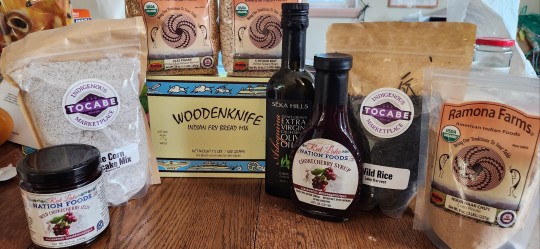
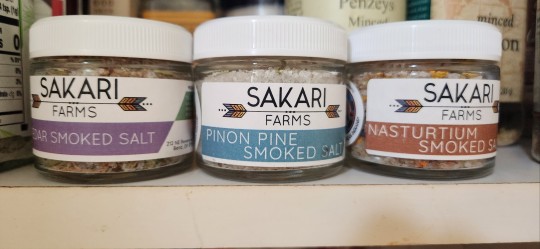
I went nuts buying stuff from native American food producers. I went to three sites:
https://sweetgrasstradingco.com/
https://shoptocabe.com/
https://www.ramonafarms.com/ (ramona is available on sweetgrass's site, which would have saved me shipping if i had found sweetgrass first)
Corn pinole is my new favorite thing. It tastes so good! I love it in yogurt or apple juice: https://store.ramonafarms.com/Pinole-Traditional-Snack-Foods/products/15/
0 notes
Text
Native Food Conservation & Sovereignty
I live in a place near the ancestral lands of the Snoqualmie people. I am always excited to share their cultural and natural reclamation successes. Much respect to your ancestors, to your current elders, and to those who will be elders in future days.
https://storymaps.arcgis.com/stories/73a30f8127b34c31abb67f31a331a211
#snoqualmie people#wapato#native plants#native foods#celebrate successes#supporting Indigneous Peoples and their Rights
0 notes
Text
However, it was eventually realized that the wild ancestors of sugarcane, the leafy vegetables, and the edible grass stems are New Guinea species, that the particular type of bananas grown in New Guinea have New Guinea rather than Asian wild ancestors, and that taro and yams are native to New Guinea as well as to Asia.
"Guns, Germs and Steel: A Short History of Everybody for the Last 13,000 Years" - Jared Diamond
#book quote#guns germs and steel#jared diamond#nonfiction#ancestor#sugarcane#leafy vegetables#edible grass#new guinea#banana#asia#taro#yam#native foods
0 notes
Text
hickey's knife super interesting for obvious reasons, but also have you guys ever see some of the other knifes that got fashioned / salvaged from the wrecks.... especially the inuit-made ones....

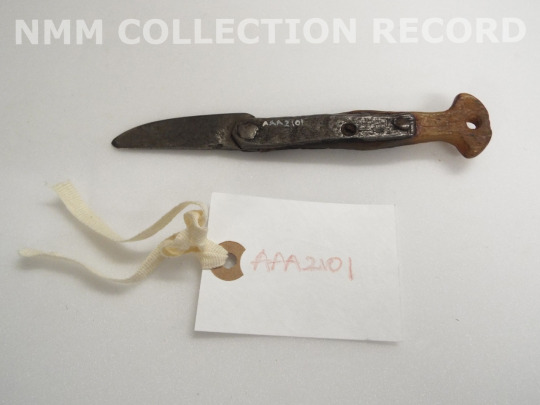



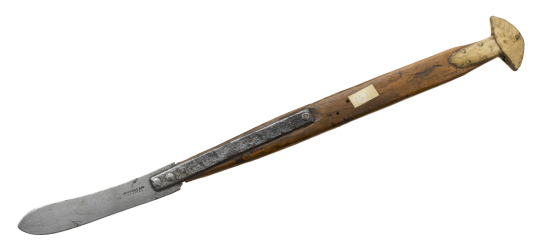






like these are very beautiful to MEEEEE
#especially the ulu knife being made from a recycled goldner tin...... i could cry....#native tool to skin animals/slice food into portions being crafted from the metal that held poisoned sour food that killed the imperialists#i need to double over and take a fucking breather here dude are you KIDDING MEEEE#the terror
1K notes
·
View notes
Text
so I found this really cool website that sells native seeds- and you might be asking me "snekdood, haven't you posted an entire list of websites that sell native wildflower seeds that you're going to add on to soon?" and yes that's true, but that's not the kind of native seed im talking about rn.
see, on my quest to find websites that sell native wildflowers, I came across this dope ass website that sells seeds that have been farmed and harvested by ntv people traditionally, i'll let the website do the talking:




so anyways this is the coolest website ever. you can find the wild relatives of chiles on here called chiltepines, you can find different colors of corn and cool squash's, and every seed from whichever farm has it's own lil origin story written about it. you can also find other veggies here that are already commercially available to help fund and support this organization. as well as there being a cool gift shop with a lot of art made by different native folk from all around as well as cookbooks, jewelry, pottery, weavings, and clearly plenty more:

as well as a pantry?? with premade soup mixes??? and i really want to try them now??????
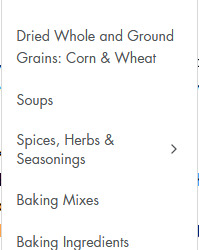
anyways I think its worth snoopin' around bc I'm almost positive you'll see something you think is cool (oh also if you happen to have some seeds passed down from ur family too and ur also native they seem like they would gladly help produce more)
#heirloom seeds#native plants#native wildflowers#native seeds#native seeds search#gardening#farming#seed conservation#heirloom vegetables#vegetables#crops#food#native american#native american traditions#native american heirloom seeds#support indigenous people#indigenous art
2K notes
·
View notes
Text
Being a novice gardener whose first priority is creating a welcoming place for wildlife with plenty of native plants and natural food sources has made me even more aware of how many people genuinely despise nature and wild animals especially. Like gardening communities and resources are filled with an absurd amount of disdain for anything other than bees, butterflies, and pretty birds that never ever eat anything from the garden.
Finding other people with similar goals and desires to mine, people who love native flora and fauna and want to welcome animals in rather than keep them out, feels like finding an oasis in the desert. I know things are getting better, I know this attitude is changing, but it feels so slow and difficult.
#i've been looking up how to plant berry bushes directly in a yard#and every single page seems to come with a guide on how to build cages around them to keep the birds out#but i? want the birds???#i don't even like blueberries i just want to provide a native and natural food source for animals
225 notes
·
View notes
Text
So, long story short--a Master Gardener who has been maintaining a native plant garden for years is now being harassed by a neighbor, with whom the city code enforcers sided, and she's facing daily fines if she doesn't turn at least half of her yard into grass lawn. Apparently the only plants that are allowed to grow higher than seven inches are those that are edible, useful, or decorative.
If you are at all ecologically aware, you know that grass lawns are essentially ecological wastelands. A monoculture of non-native grass, especially if it's sprayed with herbicides, fertilizers, and so forth, is not going to support much in the way of native wildlife. Moreover, it can be argued that native plants do fall under the allowable category of "useful" and "decorative", and some are even "edible."
The article above is dated from two days ago, but this apparently started last year. And I found an article in their local paper from this past July that says she's still fighting the city about it, plus it has a bunch of photos of her garden if you want to see what the fuss is all about. Do be aware that if you decide to contact the Prospect Code Enforcement Board, City Council, and/or Mayor with a polite note in support of her, the website only allows you to send five messages every hour and you can only message one person at a time.
ETA: I did hear back just now from one of the code enforcement folks, who says--in their words--"Prospect City asked Ms. McGrail to redesign her current plantings into a more attractive and organized layout with edged definitions to her plant beds and a more obvious ‘walking path’ in between with a more “lawn-like” appearance, using native and no-mowing options"
#native plants#gardening#native species#plants#flowers#botany#nature#wildlife#habitat restoration#environment#conservation#ecology#lawns#no lawns#food not lawns
611 notes
·
View notes
Text

The latest pickling experiment underway: dilly beans made with thawed-out commercial frozen green beans!
It seemed worth a try. You need to blanch fresh green beans for a few minutes anyway, to neutralize weird bean chemicals. Those are already blanched, and they stay crispy enough that it might work.
I haven't tried any from fresh green beans in years, and...that never turned out well before. Every batch I have made before molded on the top. Probably because the blanching does essentially pasteurize them, wiping out the natural lactobacteria hitching a ride on basically any kind of produce.
One way to get around this, I guess: mix things up!
I have certainly known people to pickle corn and beans separately, but never together like that. Guessing that probably is an extremely old combination, for some people. Throw in some squash, and you'd have some Three Sisters mixed pickles.
My Nana regularly did make dilly beans alongside the crocks of kraut and brine dill cucumbers. Guess she really liked that flavor profile too. No idea how she kept the beans from molding.
My original workaround thought was to try laying maybe a cabbage leaf in on top, as good as it is at fermenting itself. They're also great to help keep anything else from floating up to mold.
But, I decided to go one up this time, and fish a donor starter piece of leaf out of the last still-working batch! I had enough already out, so that jar got a couple of layers anyway. Plenty to go around.

I had expected the radish skins to leach a bunch of color, but not enough to turn the brine so pink!
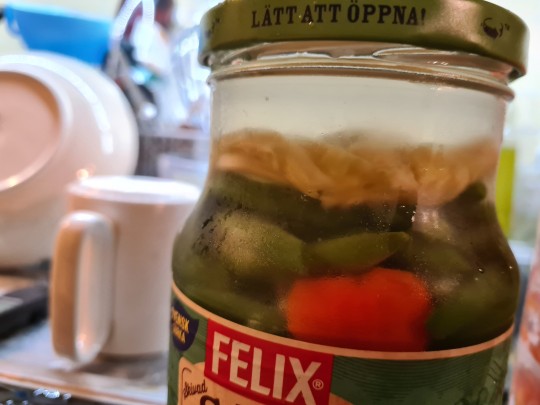
That hopping active cabbage did almost immediately cloud up the top of the new brine. Taking that as a promising sign
Otherwise, that's got fairly standard dill pickle type seasonings. I did throw in another of those little frozen homegrown chiles, a big clove of garlic halved, and a pretty big sprig of fresh dill tucked down in the middle. Since I'm using dill from the store and don't have any seed heads, I also threw some dill seeds in the bottom with the peppercorns, mustard seeds, allspice, bay leaf, and a few of those nice Assam tea leaves for extra tannins to help keep things crispy.

Now in what I suppose is turning into the Pickle Drawer. I guess we'll see how this turns out. With any luck, it (a) won't go moldy, and (b) won't turn too strange a texture. I'll be counting this as a success if it does manage to meet those criteria. But, we'll see.
#personal#food#pickling#pickles#fermentation#dilly beans#pickled beans#appalachian food#native foods#clatterbane's pickle factory#green beans
5 notes
·
View notes
Text
Recently extinct species make me sad for all the usual and normal reasons (loss of life, biodiversity and unique life forms that experienced the world wholly uniquely and acted in it like no other, to name three), but a big thing that also makes me so sad is the forgetting that comes right after. Many endangered species are greatly ignored to begin with whilst alive of course, which is awful, but the way that extinction also causes us to forget. A species could’ve been so abundant a hundred years ago, people would’ve used a fish species or a tasty plant for food, or parents would’ve warned their children to not put a poisonous toadstool or insect in their mouth, a diver would exclaim, “Aha!” after emerging from the shallows holding an especially big bivalve, or someone making a species diary would sketch out a local bird or fasten a single flower to the page. But.. then the species goes extinct. It doesn’t exist anymore. None of these events, these actions happen anymore. Not with these species. The people who had these experiences dwindle out and they may not even realise that their experiences were among the last of their kind. And we forget.
#i was thinking about the new zealand greyling which was once abundant#the maori people used to fish it and use it for food#for generations upon generations this fish species was their normal#but now it is just gone#could they have guessed that this will happen? that their everyday food item would go extinct one day#i was also thinking about the atlantic sturgeon and how it went regionally extinct in the baltic#the old northern europe people knew sturgeons. heck we had them less than a hundred years ago still#it was a native fish just like any other. just like salmon and trout#now? no one talks about them#they are forgotten#we dont learn about them alongside the perch and the pike and the roach and the trout#they are a mystery of a time gone by here#and it makes me so sad… how quickly we forget. we shouldnt
185 notes
·
View notes
Text
genuinely, i think steven universe is the first fat positive media i’ve ever seen.
sure, steven likes eating donuts, fries, and pizza, but that’s never turned into a joke, nor does that make him look bad for liking junk food. in steven universe future, although he doesn’t eat the same things as before, he’s still fat. amethyst also eats everything she sees, but that’s more because she’s a gem and she can eat anything she wants, not because of her body.
greg is comedic relief, but never because of his weight. the same counts for ronaldo.
smoky quartz is probably one of my favorite fusions in the show. though they’re very insecure, the target is not their fatness.
rose quartz is beautiful, and loved and desired by two people. EDIT: it’s confirmed she has involved with other humans too!
the body diversity of steven universe is truly amazing, but the love and respect to fat people is certainly one of its virtues.
EDIT: how could i forget sadie! she's so awesome!
#captain's log#steven universe#steven universe future#meta#su meta#food mention#if i worded anything wrong please correct me i'm not a native english speaker
3K notes
·
View notes
Text
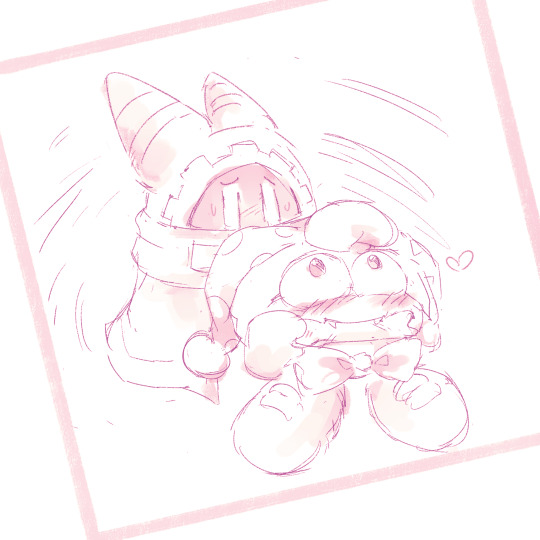
"...Where did you get that bone, Marx?"
"From the Cooler Meta Knight.
He said I could keep this in exchange
for getting rid of the rest."
"Whose bone is it?"
"Dunno. Didn't ask.
Doesn't taste like Adeleine's
so I figure it's no one we know."
"Should I ask how you know
what Adeleine's BONES taste like?"
"Magolor, I know what EVERYONE's
bones taste like. It's part of their scent."
"How does that...? Never mind.
So, what do mine taste like?"
"Charbroiled chili gumdrops
marinated in apple cider vinegar."
"...What?"
"It's completely delicious!"
#Marx Kirby#Magolor#Marxolor#I dearly missed my OTP so I thought I would draw them#But uhhh...I am several strata past 'being tired'#and this...thing...is all that came out....#Dess Sketch#Magolor is badly feigning normality#While Marx is ever inexplicable#...They are in love#I guess the 'Magolor has never had real food before' HC#probably died with the 'native Halcandran' HC huh?#F in the chat to pay respects...#cw food
193 notes
·
View notes
Text
I saw a pileated woodpecker on my walk today and heard its call several times when I was in the back yard. so exciting i've never seen one of those at home
There are SO many birds. Yesterday watched two Tree Swallows in the back yard having their aerial courtship and a Song Sparrow sitting on the back porch singing. It seems like I hear so many more bird songs than ever before, many unfamiliar. There are loads of bluejays, cardinals, grackles, starlings, and mourning doves, and lots of birds I don't recognize.
There was a bird with a bright white belly/chest doing some kind of little dance outside this morning, and right now I'm watching yet another variety of sparrow (so many sparrows!) sitting on the edge of the porch. I heard several downy woodpecker calls too.
Could it be everything I've been planting that is causing the birdsplosion? Or the fact that we haven't mowed yet this year? The total amount of leafy and woody cover has increased only modestly (because the new trees and shrubs are still baby) but the plant biodiversity has increased dramatically.
I protected the current garden patch from clearing and instead of letting the dirt lie bare, piled leaves on top of it. The garden patch has been a favorite spot for the birds all winter long, but especially now; there's always a sparrow or cardinal there.
I've also protected the meadow from disturbance, letting the "weeds" grow up while introducing wildflowers and trying to kill or reduce the turf grass bit by bit, and the strangest thing has happened: the soil has improved very noticeably in those areas. The soil underneath the thickets of asters has become much softer and lighter, whereas in areas that are covered with overgrown turf grass, it's the same dense heavy clay as before.
And the number of earthworms is incredible. I remember a time when there was not a single earthworm anywhere in the area that is now the meadow. It was a garden patch used by the guy that lived here before, and we tilled it every year without seeing a single earthworm. Ever. Now I can hardly sink a shovel into earth there without finding 3-4 earthworms immediately???
Just a year or two ago, I would have scrambled to get my phone to take a picture if a bird landed on our porch; now not a single day goes by without 3 or 4 birds visiting, whether my adorable finch couple, or a Downy Woodpecker, or robin, or a FAT wren.
The change is so dramatic. Like that thing that happened when wolves returned to Yellowstone—a trophic cascade?
I think that somehow, all my caretaking activities have increased the insects and invertebrates, which in turn have increased the birds. There's been a great increase in butterflies, at least, and it's only early April.
CREATURES!!!
#native plant gardening#plants#meadowscaping#rewilding#kill your lawn#anti lawn#no lawns#food not lawns
642 notes
·
View notes
